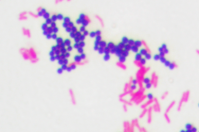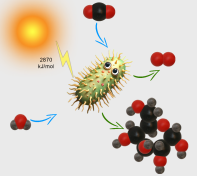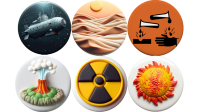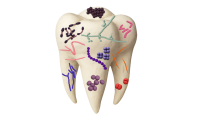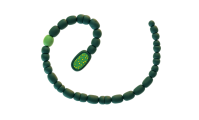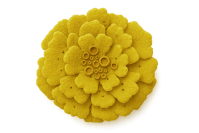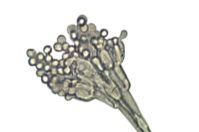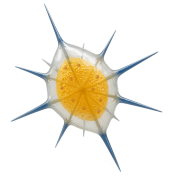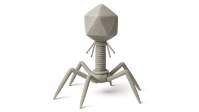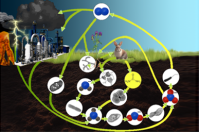Microbiology-II
Greetings, persistent microbe hunter.
These classes will be much more difficult than the first introductory course. Only the most stubborn will be able to go all the way to the end. But the reward will be a good understanding of the nature of bacteria, microscopic fungi, algae, and protozoa. If you wish, you can even do scientific work.
-
Platform: PC, Windows
-
Authorization (the "Login" button in the upper left corner) allows you to monitor your progress.
Сurriculum
- Systematics of Prokaryotes
Biologists enjoy classifying living organisms into different groups. However, prokaryotes are hard to organize. Let's explore the challenges of categorizing bacteria and archaea.
- Bacteria Shapes & Structures
In this lesson, we will study a few things you can see in a bacterium.
- Growth and Reproduction of Bacteria
One of the first scientists to figure out how bacteria reproduce was Nicolas Theodore de Saussure. He said, "If we see two small animals joined together, it does not mean that they came together to reproduce. On the contrary, these paired animals represent nothing but one old microbe dividing into two parts - into two new little animals." True, he added, "And this is the only way germs reproduce." Now we know that's not true.
Let's find out how things are.
- Bacterial Genome
The genome is the genetic material contained within a single cell of an organism.
Most living organisms build the genome from DNA (DeoxyriboNucleic Acid). Bacteria are no exception. However, the way the genome is organized inside bacterial cells is original. And their ability to exchange genetic material with everyone is unique. How do they do it? Let's find out now!
- Cellular Energetics
This lesson breaks down complex terms, such as chemoorganoheterotrophy and photolithoautotrophy, into easy-to-understand concepts. Students will explore the molecular-level differences between photosynthesis, respiration, and fermentation, as well as the distinctions between oxygenic and anoxygenic photosynthesis, and aerobic versus anaerobic respiration. The lesson also highlights the unique metabolic capabilities of bacteria, including chemolithoautotrophy and methanogenesis.
- Ecology of Microorganisms
Microbes live everywhere. They can even occupy extreme ecological niches, inaccessible to animals and plants. Even tardigrades cannot compete with them in their ability to survive in almost any environment. Earth, water, and air are all densely dotted with bacteria and their spores. Do you wish to know how they do it?
-
The most remarkable aspect of bacteria is their ability to thrive in unexpected and often unpleasant environments.In this lesson, I will explain how bacteria cope with heat and cold, both in space and at the bottom of the ocean, after being exposed to salt and toxins.
-
The oral cavity is a unique open ecosystem for various microorganisms.
In this lesson, we will learn about the microorganisms that live in the mouths of healthy people, recognize them by their shape, and determine how long the owners of the mouths have not brushed their teeth.
-
Intestinal Microflora
Did you know that nearly 20% of the food we eat is consumed by intestinal bacteria? There are a lot of them, and they are voracious. But on the other hand, those bacteria that always live with us are called "normal microflora." They also help a lot, not just steal food. In this lesson, we will look at microbial dialectics.
-
Photosynthetic Prokaryotes
Who can eat a rainbow and exhale oxygen? I'll tell you about this in the lesson.
-
Origin of Life
Once, a long time ago, but not far, far away, life suddenly appeared. What do we know about how it happened?
-
Symbiogenesis
In this session, I will discuss the eukaryotic organelles that were once free-living organisms.
-
Lichens
Have you heard of the chimera from ancient Greek mythology - a beast with the head and neck of a lion, the body of a goat, and a tail that was a snake? Do you think such creatures are impossible? Maybe in the macrocosm, they do not exist. But in the microcosm, many things are possible. Sometimes we may think we are looking at one living being, but in reality, there are three or even twenty. Join the lesson to discover the chimeras of the microworld.
-
Algae Under a Microscope
What do we mean by "algae"? This term is not very precise in science. Instead, we use the term "lower plants" to describe those that lack a root, stem, and leaves, but have a simple and uniform "thallus", like lichens. Although there is no clear definition of "algae", a branch of science does study them. And since many algae are microscopic, they are also relevant to our interest.
-
Fungi Under a Microscope
To the trained eye of a mushroom picker, identifying mushrooms is a simple matter of sight. But for scientists who study fungi, the challenge is much greater. The precise definition of a fungal species depends not on the shape or color of the mushroom's stem or cap but on the microscopic features of its reproductive structures. As the proverb goes, “Seeing is believing.” So click on start - and let's explore!
Fungal Diversity Explained: From Chytrids to Basidiomycetes on YouTube.
-
Protozoa
Protozoa are tiny and single-celled, but they are not simple at all. They are amazing creatures that come in many shapes and forms. Let's explore how they differ from each other, how they are organized internally, and how they move and reproduce.
Protozoa Classification on YouTube.
-
Viruses
There are so many viruses on Earth that, if they were truly alive, they would outnumber every other creature on the planet. But viruses are something different—more like a substance than a being. Outside their host, they cannot reproduce. In this way, viruses resemble a code or a recipe rather than a living organism. Bacteria, bunnies, mushrooms, and daisies, on the other hand, can all reproduce on their own—that’s why we call them alive. Now, let’s take a closer look at the curious way viruses manage to work.
-
Biogeochemical Cycles
This lesson explores the processes and importance of natural biogeochemical cycles, focusing on the nitrogen, sulfur, and phosphorus cycles. It includes assignments to assemble the interconnected systems of these cycles. Using provided hints and logical reasoning, participants will connect elements to form cohesive paths within each cycle.
-
Careers That Use a Microscope
Learning how to use a microscope is not only fun but also valuable. Many careers require microscope skills, such as biology, forensics, jewelry, medicine, and geology. These careers are very diverse and offer different opportunities and challenges. How can you decide which one is the best for you?
